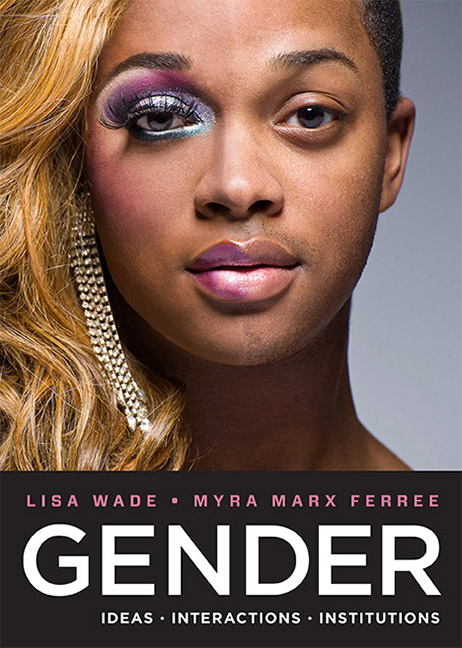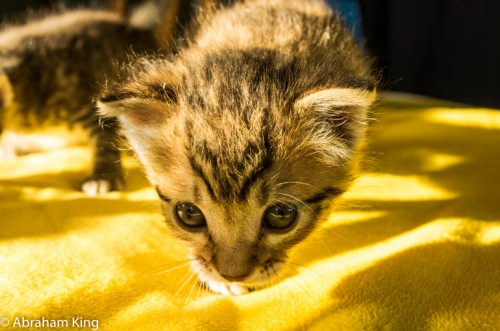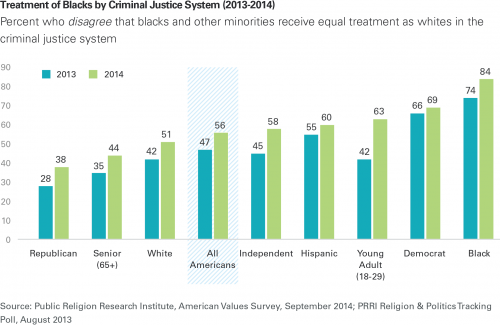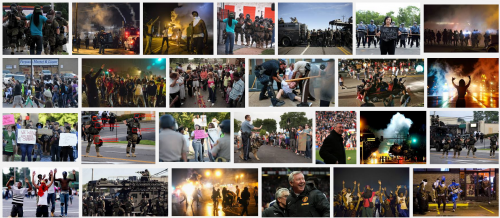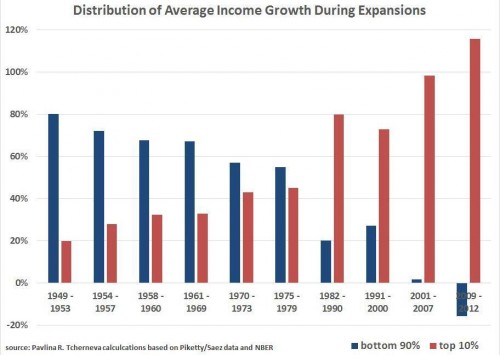Economist Robin Hanson has an “it isn’t about” list. It begins:
- Food isn’t about Nutrition
- Clothes aren’t about Comfort
Also on the list is:
Maybe church isn’t about religious ideas either.
I was reminded of this recently when I followed a link to a Pew quiz on religious knowledge. It’s a lite version of the 32-item quiz Pew used with a national sample in 2010. One of the findings from that survey (the full report is here) was that people who went to church regularly and who said that religion was important in their lives didn’t do much better on the quiz than did those who had a weak attachment to church and religion.
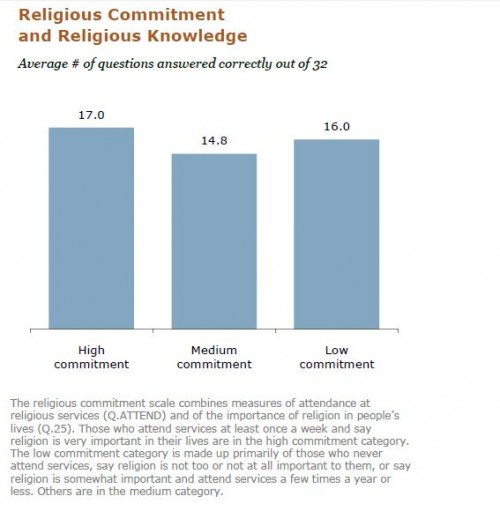
The strongly committed averaged 17 correct answers out of the 32 questions; the uncommitted, 16. This same pattern was repeated in the more recent 15-question quiz.

The committed may derive many things from their church attendance and faith, but knowledge of religion isn’t one of them.
To be fair, the quiz covers many religions, and people do know more about their own religion than they do about others. “What was Joseph Smith’s religion?” Only about half the population gets that one right, but 93% of the Mormons nailed it. Mormons also knew more about the Ten Commandments. Catholics did better than others on the transubstantiation question. But when it came to knowing who inspired the Protestant Reformation, Protestants got outscored by Jews and atheists.
Overall, nonbelievers, Jews, and Mormons did much better than did Protestants and Catholics.
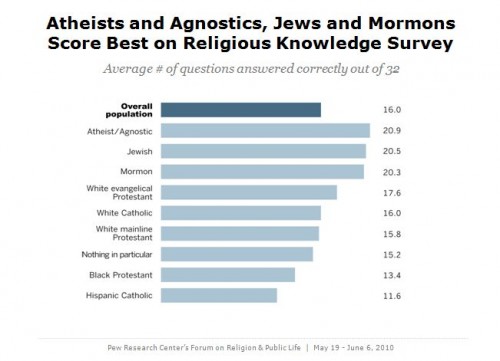
One reason for their higher scores might be education – college graduates outscore high school or less by nearly 8 points out of 32.
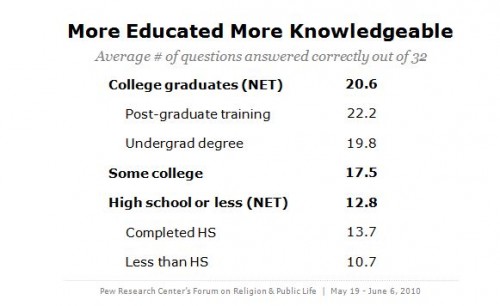
It may be that nonbelievers, Jews, and Mormons are more likely to have finished college. Unfortunately, the Pew report does not give data that controls for education.
But another reason that these groups scored higher may be their position as religious minorities. Jews and Mormons have to explain to the flock how their ideas are different from those of the majority. Atheists and agnostics too, in their questioning and even rejecting, have probably devoted more thought to religion, or more accurately, religions. On the questions about Shiva and Nirvana, they leave even the Jews and Mormons far behind.
For Protestants and Catholics, by contrast, learning detailed information about their religion is not as crucial. Just as White people in the US rarely ask what it means to be White, Christians need not worry about their differences from the mainstream. They are the mainstream. So going to church or praying can be much more about feelings – solidarity, transcendence, peace, etc. That variety of religious experience need not include learning the history or even the tenets of the religion itself. As Durkheim said, the central element in religion is ritual – especially the feelings a ritual generates in the group. Knowing the actual beliefs might be a nice addition, but it’s not crucial.
Cross-posted at Pacific Standard.
Jay Livingston is the chair of the Sociology Department at Montclair State University. You can follow him at Montclair SocioBlog or on Twitter.


